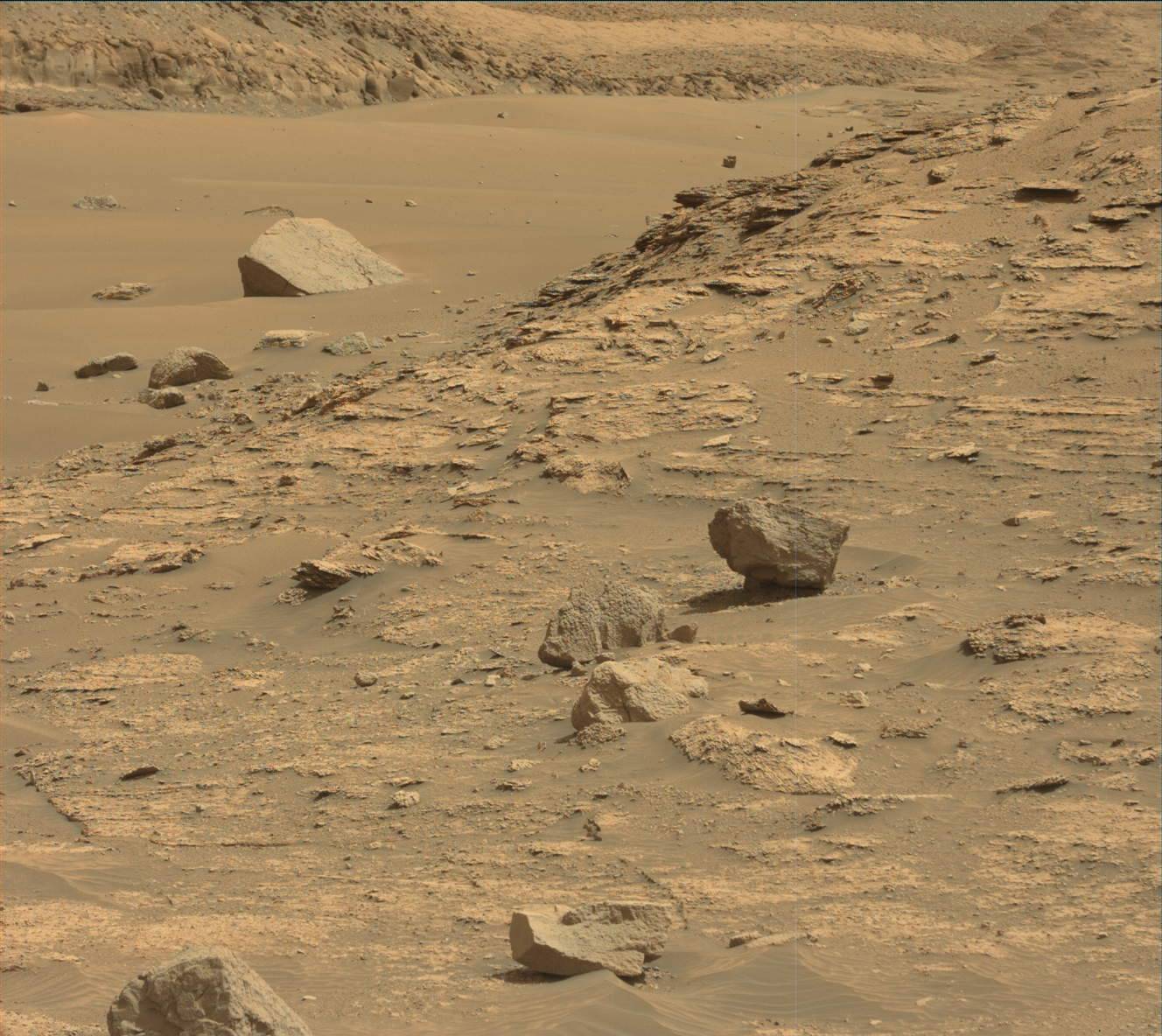3 min read

For this 3-sol weekend plan, I worked as the Tactical Uplink Lead. This morning we came in to discover that the drive had stopped early due to high slip on the steep terrain, and our parking place was not a safe spot to unstow and use the arm. So we quickly switched gears and loaded up the plan with lots of remote science. This terrain is particularly beautiful, so the opportunity to take more imaging is both scientifically interesting and visually stunning, as shown in the attached Mastcam image which shows the valley into which we are heading, called “Paraitepuy Pass.” We hope to be able to avoid the deep sand ripples which are strewn with boulders and follow a bedrock “sidewalk” along the western edge.
On the first sol of our plan, we looked at “Carrao,” a nearby smooth bedrock target with ChemCam LIBS and documented it with Mastcam. We then took several large Mastcam multispectral mosaics of two sand ripple targets, “Holmia” and “Gluck Island,”, and the Bolivar butte from this new vantage point. We also did ChemCam sky flats, to look for any dust on the camera, and an early morning engineering activity to help calibrate our heating needs in this changing season as we start to reach the end of summer.
On the second sol, we continued our intensive remote imaging campaign, with LIBS and Mastcam on the target “Siparuni,” a laminated bedrock target to contrast against Carrao. In addition we used Mastcam to take multispectral imaging of two areas, “Young Paru” and “Alvorada,” to document the different textures that are present. We also imaged “Wandaik” and “Isla Orquidea,” two diagentic features, in stereo. We also took stereo imaging of “Bom Futuro,” which is a fracture in the rock that has been filled with different material. Lastly, for Mastcam, we took multispectral imaging of “Salto Sakaika,” which is a large fallen block that shows bright flecks, and a set of color calibration images. Also before driving away, we took some atmospheric measurements with Navcam, a frame looking north toward the crater rim and a suprahorizon movie also looking north.
The drive itself was very challenging, given that we had already stopped short due to the difficult terrain. We are attempting to reach a high point, just at the top right edge of the image, so we can look down into the valley to see if there is a way out on the other side and to help plan our path forward. High tilts, sand, and large and small rocks clutter the terrain, requiring the Rover Planners to pick their way around while making sure they stay clear of the hazards.
After the drive, we took a lot of imaging from our new location, including a 360 degree Mastcam mosaic and an upper tier of imaging to catch the tall relief of the valley walls. We also took a very long atmospheric suite of observations to look over time for dust devils as well as another suprahorizon movie. We finish our post-drive imaging with a MARDI image of the ground underneath us just after sunset (as we do after each drive) and a pre-dawn Navcam cloud survey.
On the final sol of the plan, we have some additional atmospheric and instrument engineering activities, including a Mastcam tau image of the sun, Chemcam sky imaging, Chemcam calibration imaging, another Navcam dust devil survey, and a long APXS of the atmosphere with the arm stowed.
Written by Ashley Stroupe, Mission Operations Engineer at NASA's Jet Propulsion Laboratory







